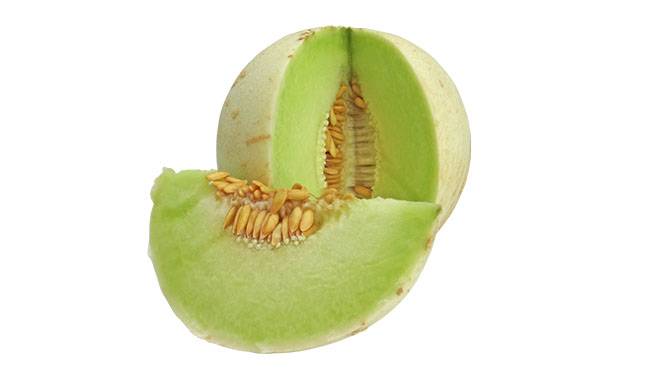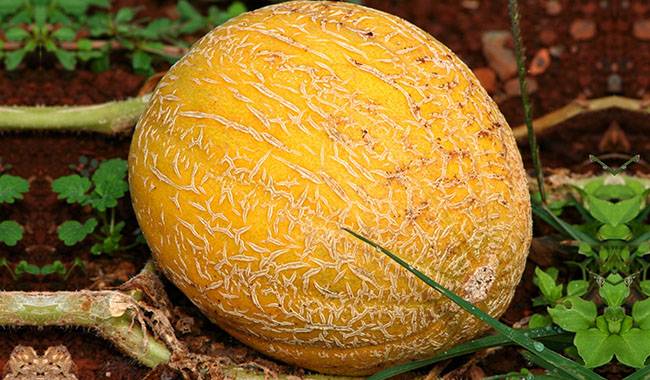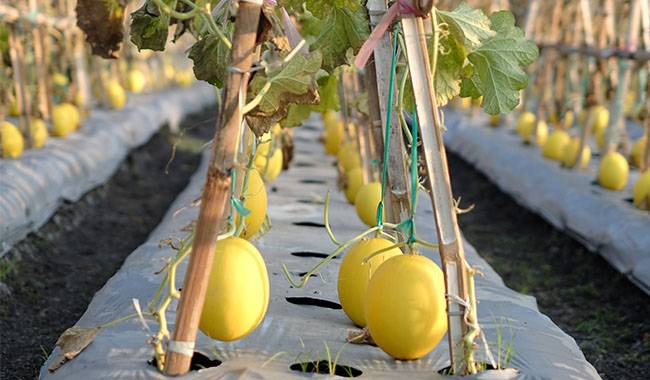
Honeydew is a kind of melon, native to the United States, also called “white melon” or “Honeydew melon”.
Honeydew generally weighs 1.5-2 kilograms, with thick skin and sweetness, and the juice is rich and tender.
Due to the excellent planting environment provided by the planting area, such as strong sunlight radiation and the great temperature difference between day and night, this unique condition makes the Honeydew rich in sugar and excellent quality.
The flesh is light green and translucent, just like an emerald ( Sometimes there is apricot yellow).
Its melon tastes sweet and sweet, the flesh is emerald green, the capsule is thick and juicy, crisp and tender, and the sugar content is as high as 15%. It enjoys the reputation of “scent like osmanthus, sweet like honey”.
Honeydew appearance characteristics
Honeydew is an annual creeping or climbing herb; the stems and branches are ribbed, with yellowish-brown or white rough hairs and warty protrusions.
The tendrils are slender, single, and puberulent. The petiole is 8-12 cm long, with grooves and short bristles;
The leaf blade is thick paper, nearly round or kidney-shaped, 8-15 cm in length and width, rough on the top, covered with white bristles, densely bristled with bristles along the veins on the back, undivided or 3-7 lobed on the edge, lobes The apex is round and blunt, with serrations, the base is truncated or semicircularly curved, with palmate veins. The flowers are unisexual and monoecious.
Male flowers: several clusters in leaf axils; peduncle slender, 0.5-2 cm long, pilose; calyx tube narrowly bell-shaped, densely white pilose, 6-8 mm long, lobes sub-subulate, erect or spreading Short tube;
The corolla is yellow, 2 cm long, lobes oblong-ovate, sharply pointed; stamens 3, filaments are extremely short, the drug chamber is bent, and the tip of the drug septum is elongated; the degenerate pistil is about 1 mm long. Female flowers: solitary, coarse pedicels, pilose;
The female flower is a long oval, densely covered with pilose and long bristles. The style is 1-2 mm long, and the stigma is close together, about 2 mm long. The shape and color of the fruit vary from variety to variety, usually spherical or oblong, with smooth skin, with longitudinal grooves or markings, no thorn-like protrusions, white, yellow, or green flesh, with a sweet taste;
The seeds are stained white or yellowish-white, ovoid or oblong, pointed at the apex, blunt at the base, smooth in surface, and without edges. Flower and fruit period in summer.
Honeydew likes to be dry, suitable for planting in arid areas. It has a continental climate with low rainfall, strong sunshine, and high day and night temperature, which is very beneficial to the growth of Honeydew and the accumulation of sugar.
The mature Honeydew has a spherical shape, a uniform size, white-to-yellow skin, and a very beautiful appearance. After cutting, the fleshy mouth is green, the flesh is thick and juicy, crispy and tender, and fragrant.
Nutritional value of Honeydew
Honeydew has a white and hard skin, a light yellow halo and green on the sun, a small inner cavity, and sugar content of 13-16%
Honeydew is rich in calcium, phosphorus, iron, and many vitamins. It is storage-resistant and suitable for storage and transportation.
Nutritional parameter content of Honeydew (per 100g)
Calories 21.00 kcal
Carbohydrate 5.30g
Fat 0.10 g
Protein 0.60 g
Cellulose 0.80 g
Vitamin A 7.00 micrograms
Vitamin C 14.00 mg
Carotene 40.00 mcg
Thiamine 0.02 mg
Riboflavin 0.03 mg
Niacin 0.60 mg
Calcium 24. mg
Iron 0.9 mg
Phosphorus 13 mg
The 4 Benefits of Honeydew
1. Digestion
It is helpful for the secretion of gastric acid and the digestion of food and is suitable for the treatment of diet stagnation syndrome.
2. Diuresis and swelling
Consuming Honeydew can replenish water and sugar, which has great benefits and effects on diuresis and swelling. It can remove toxins and excess water from the body, promote blood and water metabolism, have a diuretic, and reduce edema.
3. Sweating
Eating Honeydew can help to sweat and improve fever. Mainly divergent wind-heat, suitable for severe fever, slight aversion to cold, headache, sore throat, thirst, red tongue, thin yellow coating, floating pulse.
4. Strengthen the spleen and stomach
Warm the stomach, treat stomach cold syndrome. It is suitable for symptoms such as abdominal distension, loose stools, loss of appetite, and fatigue caused by weakness of the spleen and lack of mobility. Consuming Honeydew can nourish the stomach, promote digestion, and can also promote appetite.





